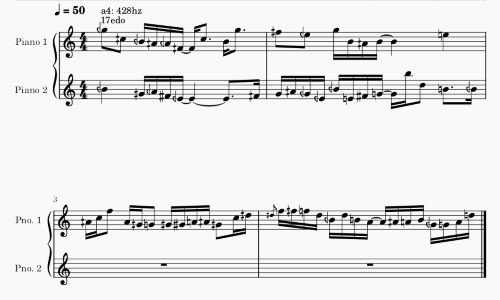Musicians are a prideful bunch encompassing many cultures and personalities. However, much of musical performance and education is rooted in stagnant tradition that fails to explore entirely innovative fields that can expand an already well-defined system. One such relatively untapped world of music resides between the notes and pitches we already know and love.
Music is one of the most creative forms of emotional and personal expression that humans have created during our time on this planet. Unsurprisingly, when musicians started using instruments, tuning methods were necessary to play different intervals, chords, and accompaniments to vocals or other instruments with decent consonance. By discovering basic relations such as the 2:1 (octave) and 2:3 and 3:2 (perfect 5th and 12th), instruments developed tunings with various numbers of notes in between to satisfy these basic consonances, each with differences in pitch. Many of these intervals and notes are defined by the harmonic series, and tunings of what we call 3rds, 5ths, 6ths, octaves, and other fundamental intervals can be defined by these frequencies.
Confusingly, our modern tuning system, with 12 notes to the octave, also known as 12 tet or 12EDO, is the de facto tuning system for nearly all western and even non-western musical instruments and music. Although it contains decent approximations of the previously explained "pure" intervals within it, many of these intervals could be better represented by other tuning systems with more or less notes per octave, known as microtonality and sometimes macrotonality.
I recently composed a canon for three voices meant to be played back on a Möbius strip cut into thirds, like it would be fed through a music box. A creative concept, indeed, but not quite enough for myself. The composition is in 17 tet, which comprises of 17 equally-spaced pitches to the octave. The resulting concoction of intervals is at times jarring; in other places, Bach-esque intervals resonate through the result of layering the same voice onto itself inverted and mirrored. In any case, the real challenge came with acknowledging the existence of new chords that 12 tet doesn't even recognize: stuff like neutral triads, sustained chords produced with a diatonic semitone rather than an augmented second, and what sounds like a progression between D minor and B minor, but not quite. Here's the base set of notes notated with standard microtonal accidentals in the free notation program MuseScore:

In essence, the top voice wraps around onto itself when the Möbius plane is conceived, making it actually play with itself! Not only that, but a third voice in the center (represented by the second piano voice) plays twice but mirrored the second time. This canon can be played multiple ways depending on the direction you play certain voices: forwards, reversed, forwards and reversed. The latter of the three is explained in a video I uploaded onto my composition-focused YouTube channel; the link is below.
Listen to all iterations of this composition below:
1. Original composition (no strip formed)
2. Two full rotations of the strip formed and cut into thirds (second rotation plays the inverted and flipped notes of the first rotation)
3. Reversed full rotations of the strip (back to starting position)
4. One full rotation of the strip, then a reversal of planes and rotation playing the same rotation backwards (notes become inverted and flipped) - this is the version explained in the video
This composition took much less time to compose than to conceive; finding the necessary tools was a real journey, and through many cases of trial and error, I settled upon using a Scala-compatible soundfont player and VST called Sforzando with Ableton Live 10 which did the trick.
I also introduced this piece to professor Bill Alves, a composer and professor of Humanities at Harvey Mudd College. As a pioneer in microtonal composition, MIDI applications of microtonal performance, and isomorphic keyboard designs, I was glad to know that Professor Alves was interested in my composition and I am happy to take part in the burgeoning community of microtonal composers and theorists.
Microtonal composition can easily be a mess of fractions, mathematical models, and calculations. But what's the point of all this being niche and nerdy? When I open up my music notation software or DAW, its filled with VSTs and plugins that I've scoured for on the internet, on forums, and on subreddits of subreddits that led me to what I needed to compose microtonally. Observing Tonnetz diagrams and fiddling with isomorphic keyboard layouts surely doesn't sound like music to my ears. In comparison to the ordinary musician, I tend to dive deep into figuring out these techniques and end up learning more than I probably need about a topic - it's just my nature. So how does the music community and industry go about making all tunings a tangible reality for the modern musician or artist? Only time will tell.